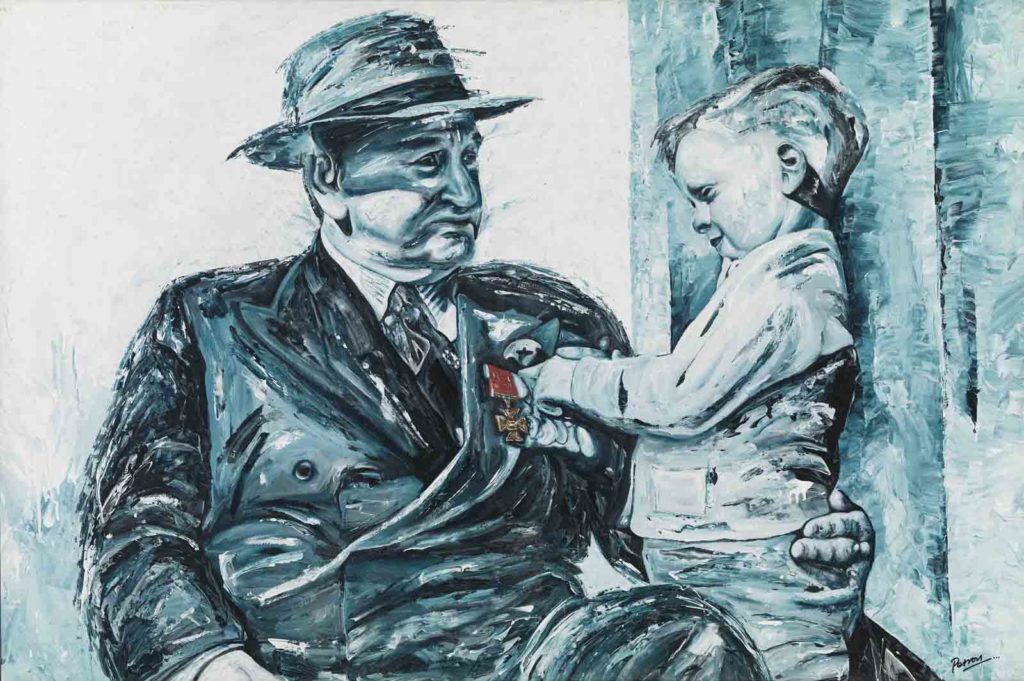Lieutenant Lawrence Dominic ‘Fats’ McCarthy
Lawrence Dominic McCarthy (1892?-1975), named at birth Florence Joseph, soldier, commercial traveller and building superintendent, was born probably on 21 January 1892 at York, Western Australia, son of Florence McCarthy of Cork, Ireland, and his wife Anne, née Sherry. His parents died when he was very young and he was brought up in Clontarf Orphanage, Perth, and educated in Catholic schools.
McCarthy was working as a contractor when he enlisted in the Australian Imperial Force on 16 October 1914; he was posted as a private to the 16th Battalion and sailed for Egypt in December. On 26 April 1915 ‘Fat’—the appropriate and affectionate nickname earned by his ‘ample frame’—landed at Gallipoli with ‘C’ Company. Appointed lance corporal on 13 May, he was promoted corporal on 19 July and sergeant on 1 September.
The 16th Battalion reached France in June 1916 and took part in heavy fighting around Pozières and Mouquet Farm in August. On 8 March 1917 McCarthy was appointed company sergeant major and on 10 April was commissioned second lieutenant. Next day he was wounded at Bullecourt and evacuated to England, rejoining his unit on 9 July. A lieutenant from 1 November, he received the French Croix de Guerre at Beaumetz two days later. From 31 January 1918 he was posted to the 13th Training Battalion, Tidworth, England, returning to the 16th in time for the offensive of 8 August.
Near Madam Wood, east of Vermandovillers, France, on 23 August McCarthy performed what the official war historian rated as ‘perhaps the most effective feat of individual fighting in the history of the A.I.F., next to Jacka’s at Pozières’. The 16th Battalion, with McCarthy commanding ‘D’ Company, had attained its objectives but the battalion on the left was unable to make headway. Accompanied by Sergeant F. J. Robbins, D.C.M., M.M., McCarthy attacked the German machine-gun posts which were preventing its advance. They raced into the enemy trench system, shooting and bombing as they went, destroying three machine-gun positions. When his mate fell wounded, McCarthy pressed on, picking up German bombs as he continued to fight down the trench ‘inflicting heavy casualties’. Coming upon another enemy pocket, he shot two officers and bombed the post until a blood-stained handkerchief signalled the surrender of the forty occupants.
This feat of bravery, which resulted in the award of the Victoria Cross, had an extraordinary conclusion. As the battalion historian records, ‘the prisoners closed in on him from all sides … and patted him on the back!’ In twenty minutes he had killed twenty Germans, taken fifty prisoners and seized 500 yards (460 m) of the German front. This jovial hero believed that there was ‘a V.C. in everybody if given a chance’.
In England, on 25 January 1919, he had married Florence (Flossie) Minnie Norville, at Weston-super-Mare, Somerset. Their only child Lawrence Norville was killed in action on Bougainville in 1945.
A most popular, generous and unassuming man, he took a keen interest in community affairs.
Laurie McCarthy died at Heidelberg Repatriation Hospital, Melbourne, on 25 May 1975 and was cremated with full military honours. He was survived by his wife who donated his V.C. and medals to the Australian War Memorial, which also holds his portrait by Charles Wheeler.


